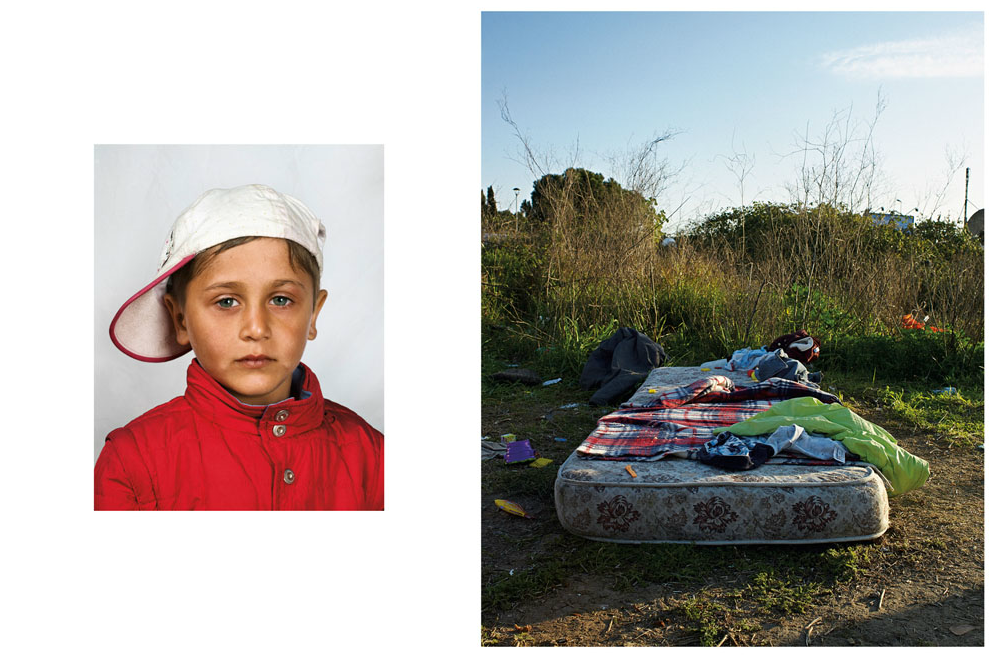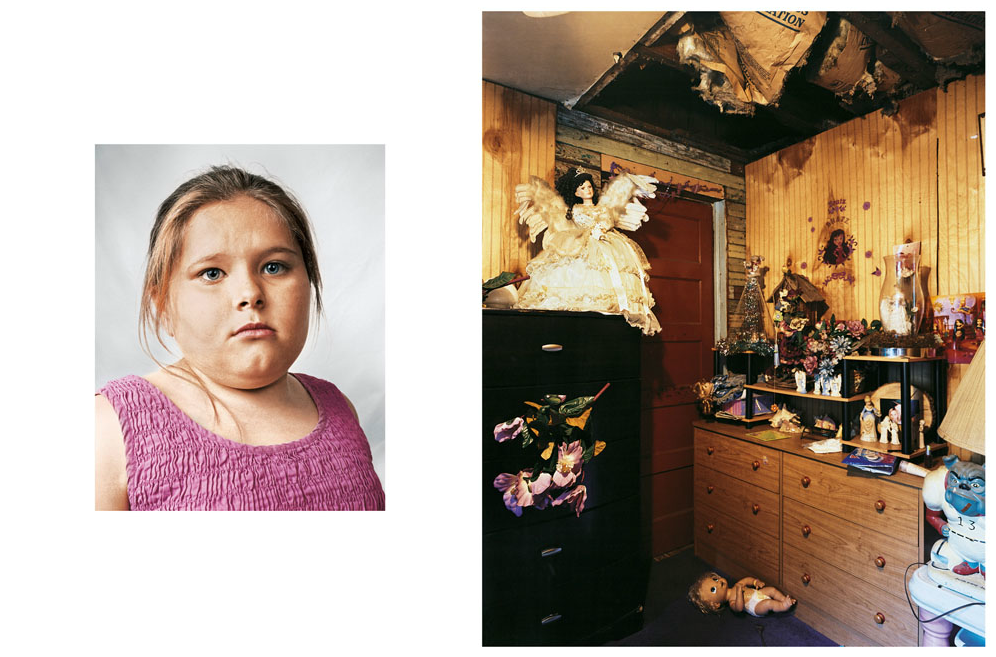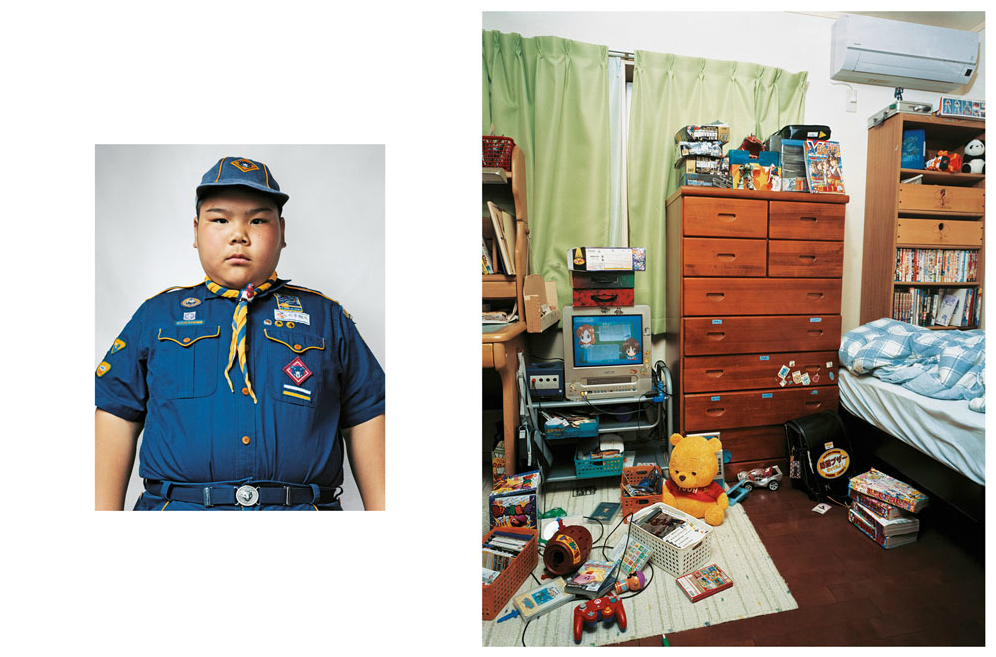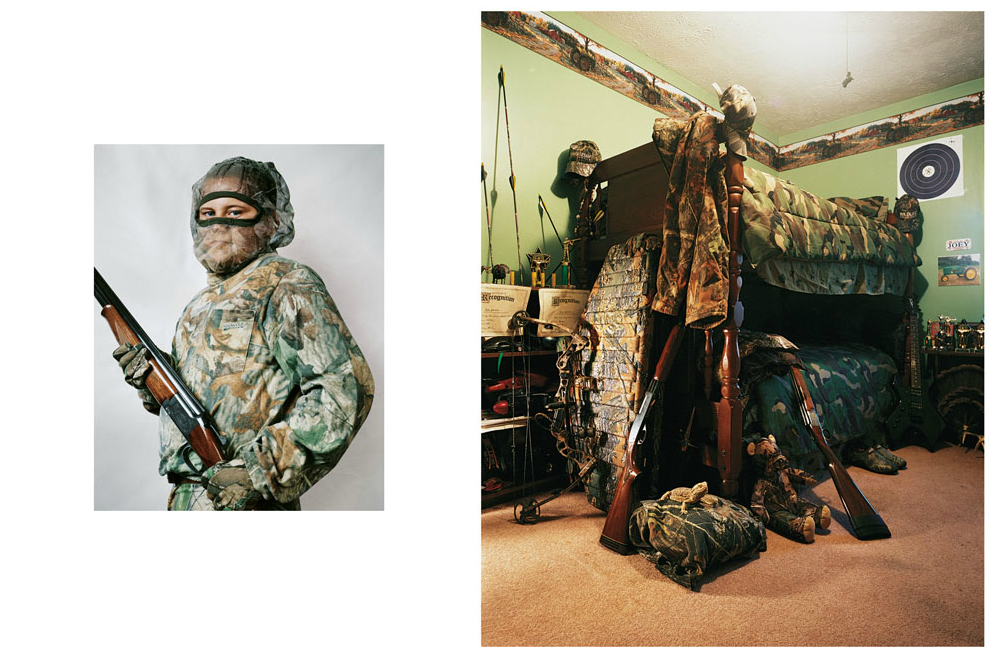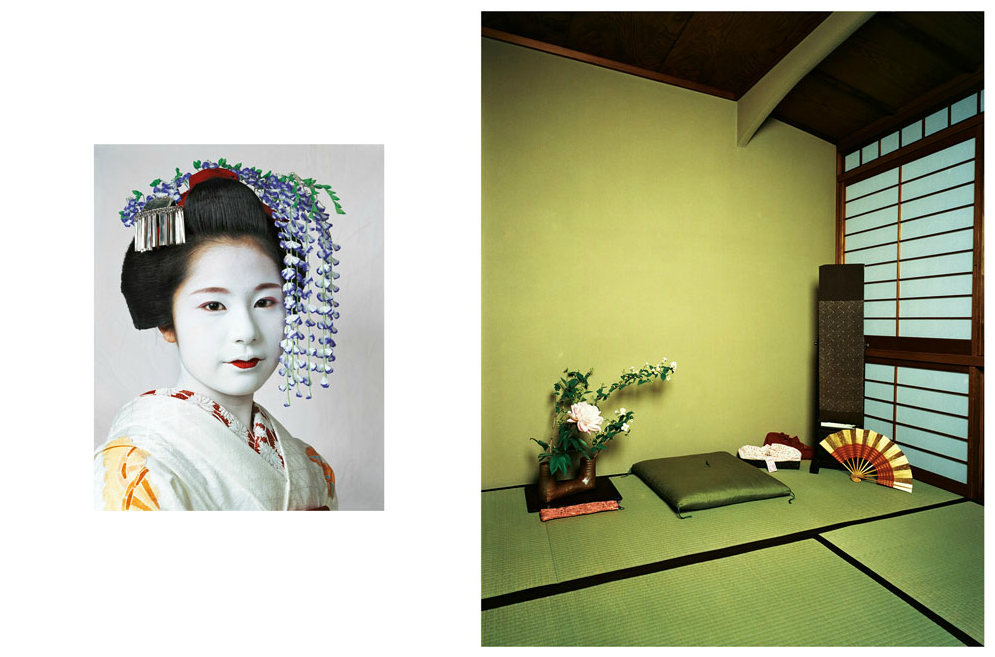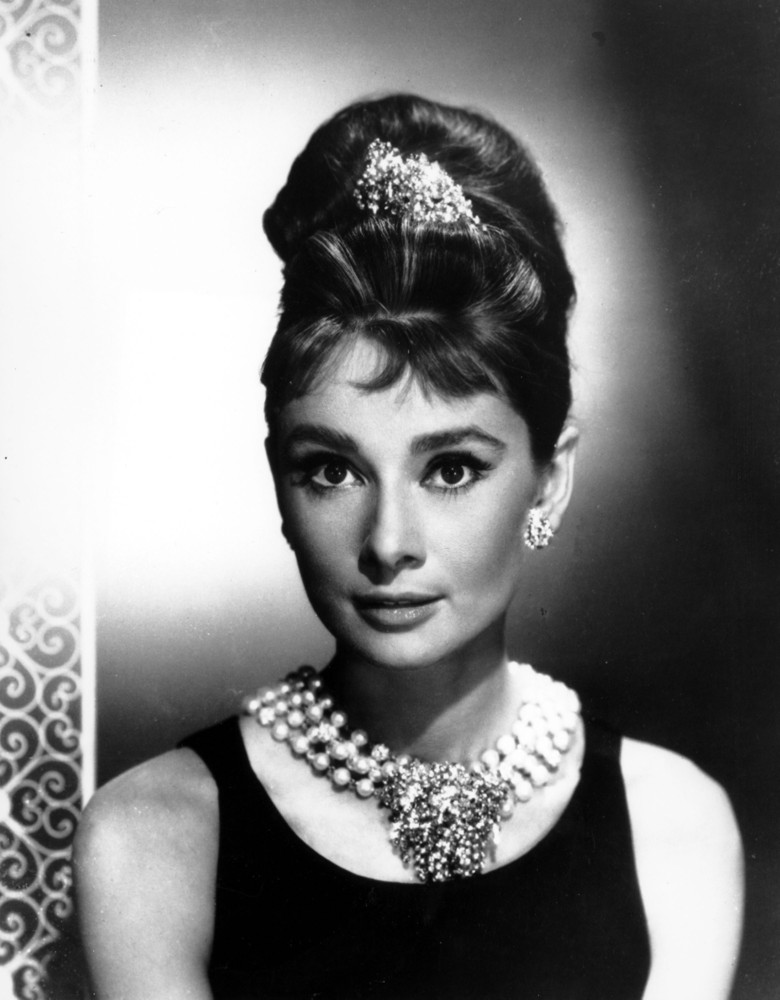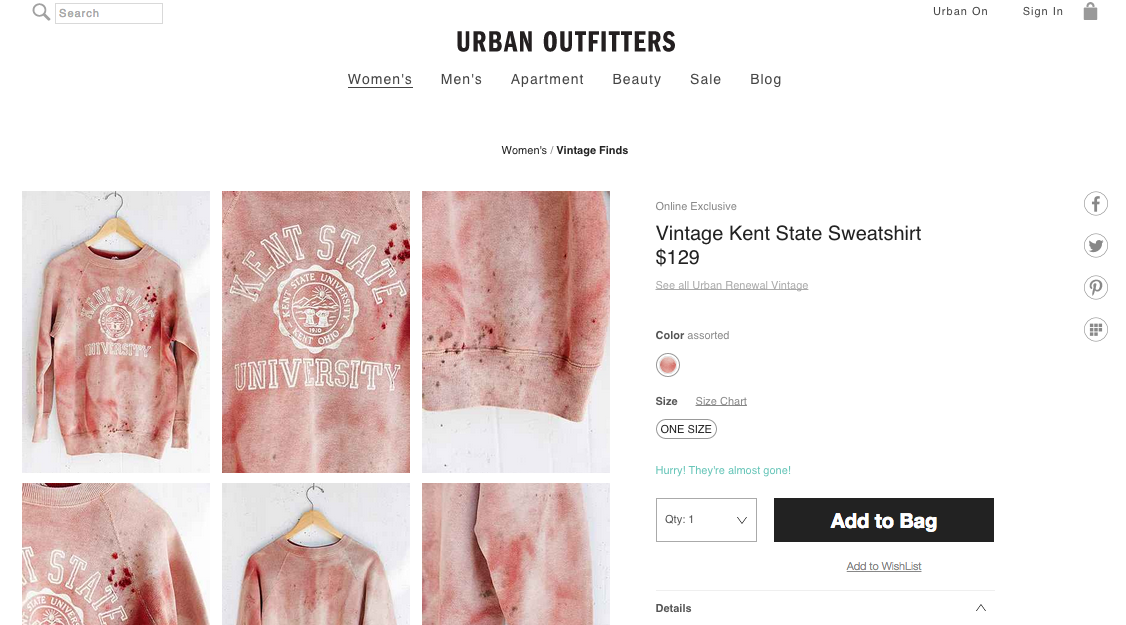This is a really interesting story about the brand Madewell. Basically, the article discusses how the authors great grandfather created a company called Madewell. In 2004, JCrew had acquired the original logo design and opened a store with the same name as the author's great grandfather's store. It's an interesting look into what it means to really own something as well as what clothes mean to us. The Madewell clothes the author grew up wearing were sentimental relics of their family's past. The Madewell clothing sold today, is hip and trendy with created sentiment through implied narratives and taking advantage of shared cultural thoughts.
http://www.buzzfeed.com/dannosowitz/how-madewell-bought-and-sold-my-familys-history#150but8
Posted by Briana Lynch
This course explores the ways in which objects and material culture embody personal narrative. Moving back and forth from ephemeral traces of events and experiences to the culturally invested luxury goods that create legacy to the objects that facilitate daily life, this class will use, as its primary references, examples that draw from queer and African American cultures to underscore the potential of objects to tell the stories that not only reflect majority traditions and experiences but those of the disenfranchised, the details of whose lives are often obscured. In addition to readings that will provide background for class discussion, student will be asked to play the roles of detectives, archeologists, and curators at various sites around New York City. Each student will also be asked to create an annotated material record that reveals the public and private lives of one individual. That record may consist of texts, objects or any variety of media chosen or designed by the student. This blogs serves as an archive for the work done in the context of this course and related materials that become relevant to this exploration.
Tuesday, September 30, 2014
Monday, September 29, 2014
Gay Parents Ease Into Suburbia
Interesting article about the inclusion of gay families into the suburbs.
http://www.nytimes.com/1996/05/16/garden/gay-parents-ease-into-suburbia-for-first-generation-car-pools-soccer-games.html
Posted by Briana Lynch
http://www.nytimes.com/1996/05/16/garden/gay-parents-ease-into-suburbia-for-first-generation-car-pools-soccer-games.html
Posted by Briana Lynch
Facebook Memorial
Now facebook provides the service of "memorializing" people's facebook pages who have passed away. They try to ensure that the persons account is not taken advantage of or used in a way that could be upsetting to the family. It's interesting to see facebook themselves address this. It's become an increasingly more common occurrence for people to leave behind facebook accounts. Although in some ways it feels strange, it's amazing to see their digital lives preserved. In a way, it's almost like going into their home or a private place of theirs since so much about their lives and personality are documented through social media. It also might change the grieving process by allowing fellow grievers to connect with one another.
https://www.facebook.com/help/150486848354038
Posted by Briana Lynch
https://www.facebook.com/help/150486848354038
Posted by Briana Lynch
"5 Things I've learned from Downsizing Our Lives"
When it comes down to downsizing, how do you choose what to keep and discard? Where do you begin to make the distinction between what's worth to keep when it all carries a part of your history?
In this case, when it's come to that point of discomfort in your lifestyle, it's easier to eliminate and detach from sentimental values. When reason trumps feelings, that's the pivotal point in which one can make downsizing a far less painful process.
Article: http://www.huffingtonpost.com/julie-kantor/5-things-ive-learned-from_b_4017383.html
- Nova M.
- Nova M.
Sunday, September 28, 2014
Gay Rights Around the World
An interesting look at what it's like to be gay in different countries around the world. The range between them is shocking.
http://www.theguardian.com/world/2013/jul/30/gay-rights-world-best-worst-countries
Posted by Briana Lynch
http://www.theguardian.com/world/2013/jul/30/gay-rights-world-best-worst-countries
Posted by Briana Lynch
Young Queer Artists
This article showcases eleven young, queer artists.
http://www.advocate.com/arts-entertainment/art/2013/11/04/11-amazing-young-queer-artists-you-should-know
Posted by Briana Lynch
http://www.advocate.com/arts-entertainment/art/2013/11/04/11-amazing-young-queer-artists-you-should-know
Posted by Briana Lynch
Thursday, September 25, 2014
Women In Clothes
http://www.newyorker.com/culture/cultural-comment/communal-dressing-room
This article discusses the book Women In Clothes... An interesting reflection on women's relationships with clothing from famous celebrities to refugee survivors. At the books launch party the contributing woman were asked to bring a piece of clothing that they would donate to a "swap rack." The article's author donated a crocheted top with a note attached to it:
This is from the seventies.
I think it’s handmade.
I found it, new, in a shop on Bleecker Street.
It is time for it to be reincarnated.
I have worn it to a Dylan concert with a pair of harem pants; on vacations, with a sarong; for an ill-starred honeymoon, over a Gaultier skirt.
The right woman could wear it with leather shorts.
This article/the book Women In Clothes, illustrates how much we identify with clothes (and even in the rejection of identifying with clothes, you are still in a way are identifying with them). A piece of clothing can represent so many things: a fond memory, the hopes of a potential one, or it can even determine the way you see yourself and live your life.
(by Isabelle Hay)
This article discusses the book Women In Clothes... An interesting reflection on women's relationships with clothing from famous celebrities to refugee survivors. At the books launch party the contributing woman were asked to bring a piece of clothing that they would donate to a "swap rack." The article's author donated a crocheted top with a note attached to it:
This is from the seventies.
I think it’s handmade.
I found it, new, in a shop on Bleecker Street.
It is time for it to be reincarnated.
I have worn it to a Dylan concert with a pair of harem pants; on vacations, with a sarong; for an ill-starred honeymoon, over a Gaultier skirt.
The right woman could wear it with leather shorts.
This article/the book Women In Clothes, illustrates how much we identify with clothes (and even in the rejection of identifying with clothes, you are still in a way are identifying with them). A piece of clothing can represent so many things: a fond memory, the hopes of a potential one, or it can even determine the way you see yourself and live your life.
(by Isabelle Hay)
"Pride" Movie
http://www.newyorker.com/magazine/2014/09/29/together-alone
Here is the review to the British movie Pride, which centers itself around the 1980s during the conflicts between Margaret Thatcher and the coal mining industry. This movie tells the story of a group of gay activists who contact the coal miners in an effort to join forces: the oppressed supporting/uplifting the oppressed.
by Isabelle Hay
Here is the review to the British movie Pride, which centers itself around the 1980s during the conflicts between Margaret Thatcher and the coal mining industry. This movie tells the story of a group of gay activists who contact the coal miners in an effort to join forces: the oppressed supporting/uplifting the oppressed.
by Isabelle Hay
The Nicholas Brothers, Fayard and Harold.
I recently came across an interesting clip from the movie Down Argentine Way, on The New Yorker's website. It briefly discusses the unrecognized talents of the Nicholas Brothers, who were performers during the golden age of musicals in the 50s. The clip is short, around three minutes, but offers interesting thoughts on the Fayard and Harold's 'lost' careers. Their talent was comparable to, if not surpassed, that of Gene Kelly or Bing Crosby, though because of their race the brothers were not given the opportunities that they deserved...
(by Isabelle Hay)
"The history of Hollywood is the history of the subjects and the people it showed—and those it didn’t. The Nicholas brothers would have been naturals for a wide range of movies that were made at the time. They should have done comedy, they should have done drama; instead, they got to dance. They did it brilliantly —better than anyone else before or since. "
http://www.newyorker.com/culture/richard-brody/movie-week-argentine-way?utm_source=tny&utm_campaign=generalsocial&utm_medium=tumblr&mbid=social_tumblr
(by Isabelle Hay)
"The history of Hollywood is the history of the subjects and the people it showed—and those it didn’t. The Nicholas brothers would have been naturals for a wide range of movies that were made at the time. They should have done comedy, they should have done drama; instead, they got to dance. They did it brilliantly —better than anyone else before or since. "
http://www.newyorker.com/culture/richard-brody/movie-week-argentine-way?utm_source=tny&utm_campaign=generalsocial&utm_medium=tumblr&mbid=social_tumblr
Wednesday, September 24, 2014
Strange Things Hotel Guests have Left Behind
Tuesday, September 23, 2014
He, She, They
"Dear Facebook: This is why your new ‘real name’ policy hurts queers like me"
"I know, we queers talk about identity all the time. The thing is, identity is at the forefront of our lives because for most of us, there has always been someone in power trying to punish us for ours, invalidate ours, or take ours away. Not everyone who exists with separate identities wants, as I did, tobecome their AKA. I know people whose gender identity, name and pronoun preferences change based on their situation, or simply based on what they feel like that day."
After reading about this article, I was immediately taken back to the first class session when we were all doing our self-introduction. We were asked what gender pronoun we would prefer to be called. Initially, it was quite strange to me since no other professors have asked such a question before, however thinking back alongside the article, it became clear.
Article: http://www.washingtonpost.com/posteverything/wp/2014/09/22/dear-facebook-this-is-why-your-new-real-name-policy-hurts-queers-like-me/
-Nova
The Pink and Blue Project
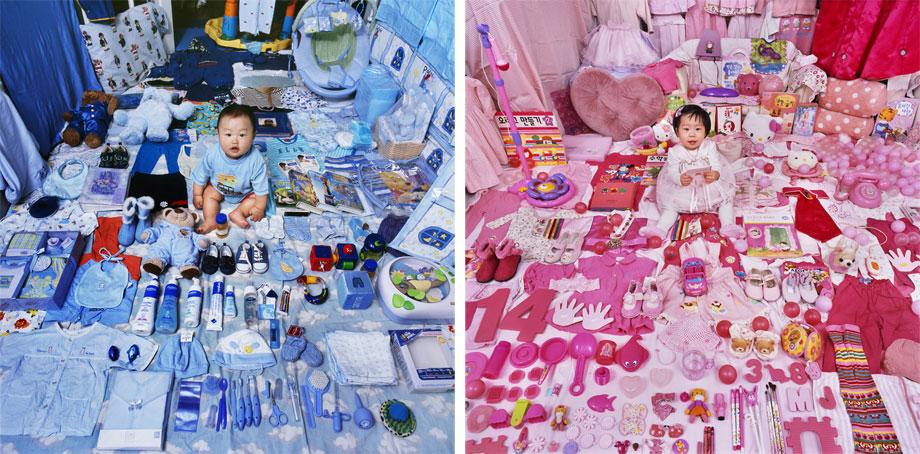 |
| "The Blue Project" Jake and His Blue Things, 2006 (l) "The Pink Project" Dayeun and Her Pink Things, 2007 |
JeongMee Yoon examines in her work, The Blue and Pink Project, the gender-specific marketing for boys and girls. Color have always been associated with gender for as long as I have known, especially when it comes to a newborn baby or toddlers. It's interesting to consider how color sometimes become a determining factor of how feminine or masculine an individual might be. If say, a man is wearing pink, one might say that he is potentially a homosexual. And if a woman were to omit pink out of her color palette, she must be a tomboy.
Article: http://www.slate.com/blogs/behold/2013/04/09/jeongmee_yoon_the_pink_and_blue_project_examines_the_gender_specific_marketing.html
-Nova
Saturday, September 20, 2014
children's room
http://www.brainpickings.org/2011/08/08/where-children-sleep-james-mollison/
Sort of similar to one of the posts someone posted on toys of children all around the world...
This shows the kids too and shares a little bit of information on the kids and it's interesting if you imagine the kids after looking at only their rooms and actually read how they are.
Here's part from the site:
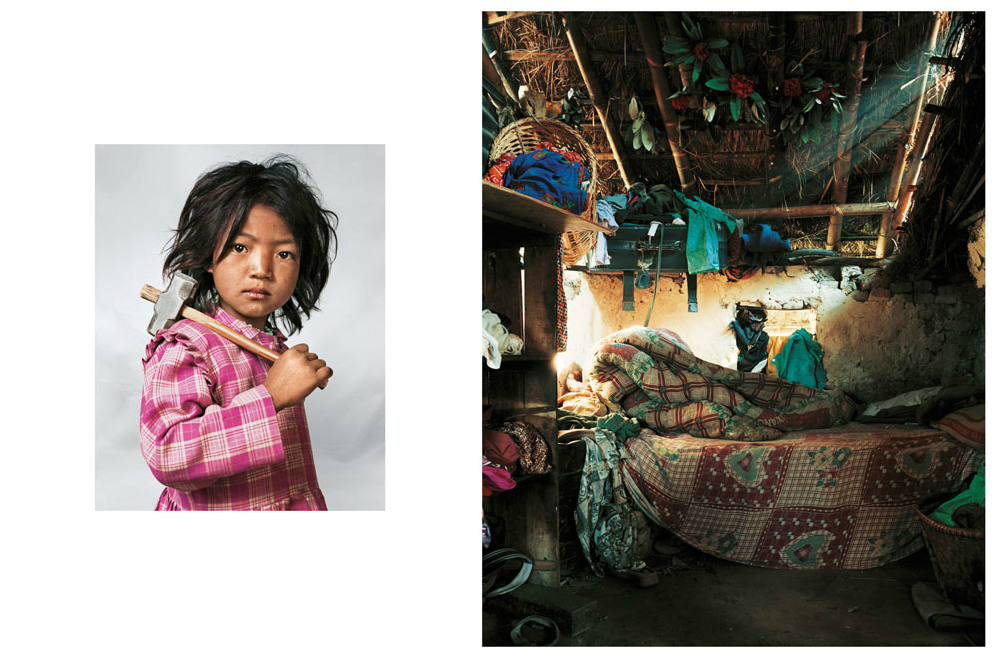
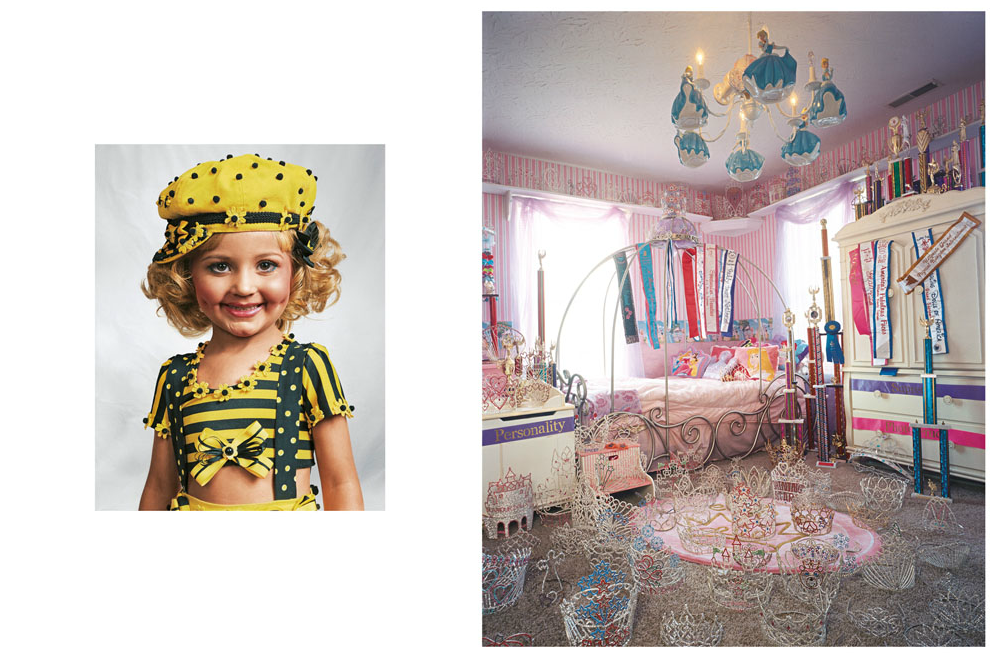
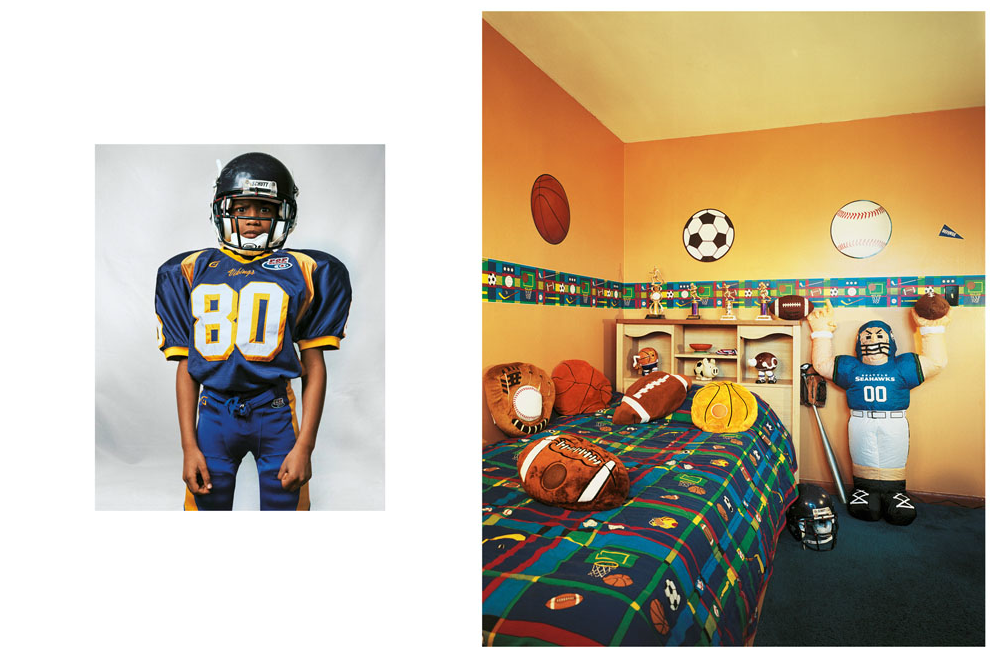


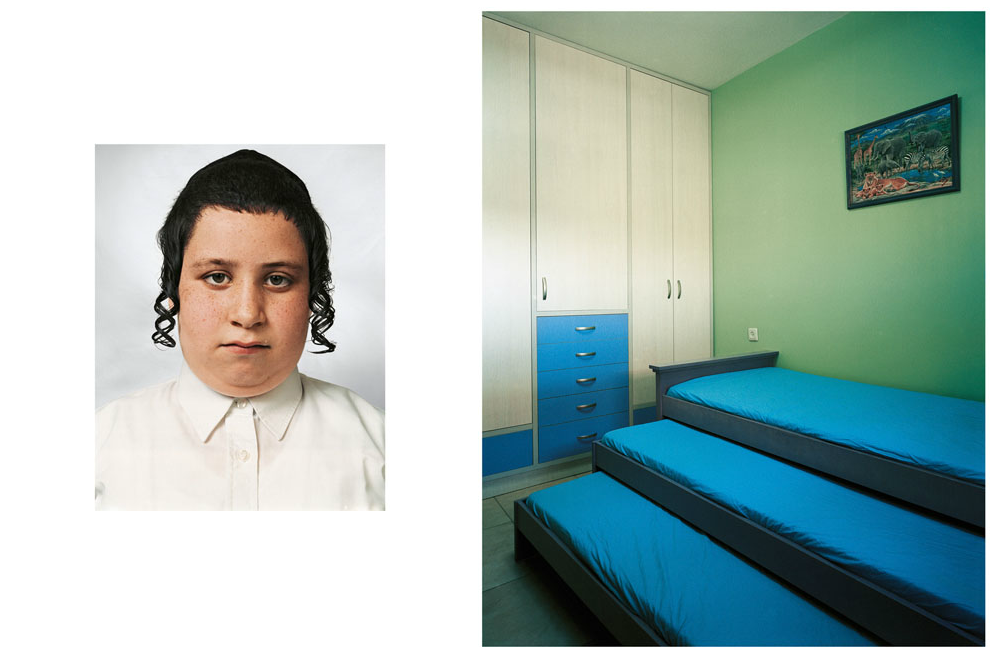
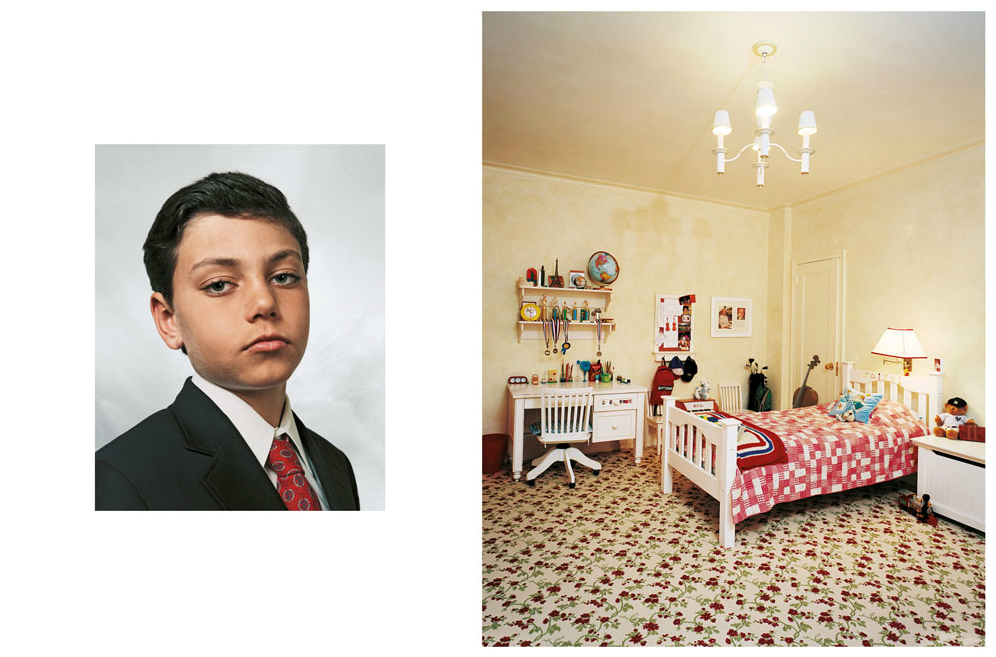
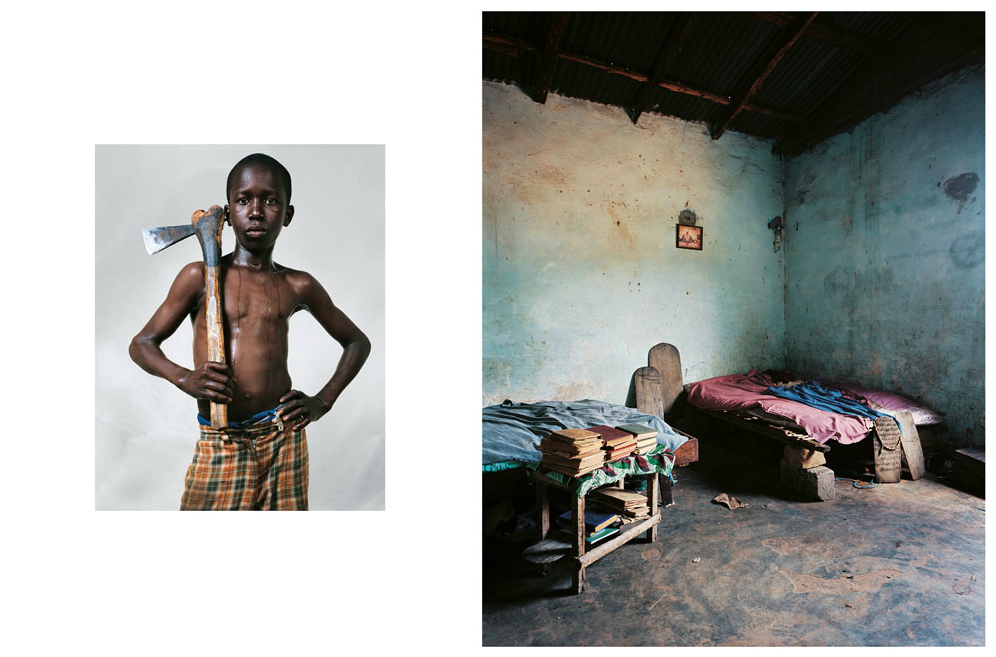
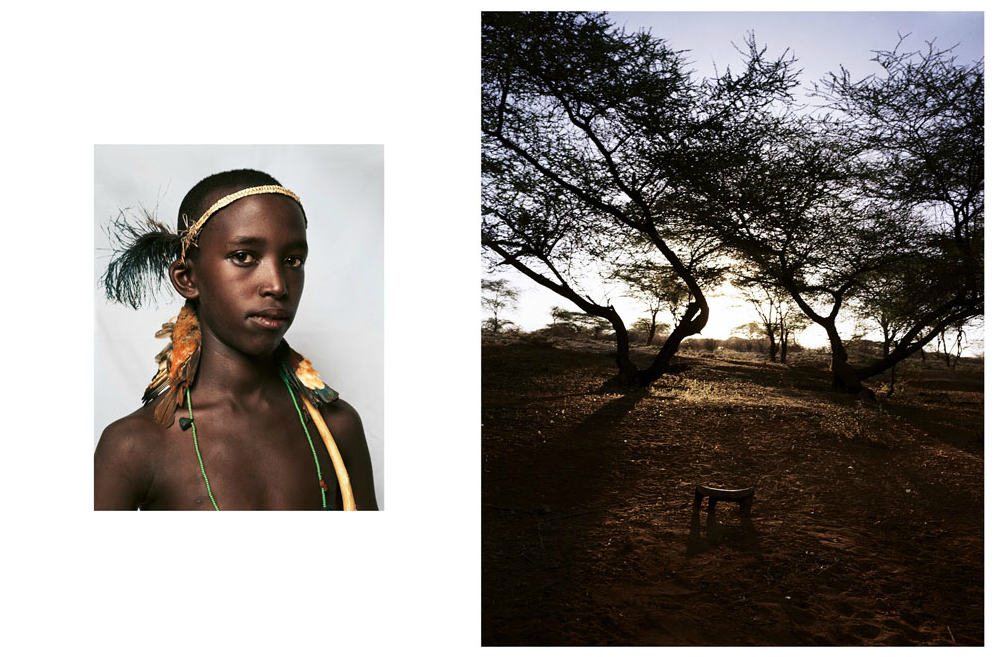
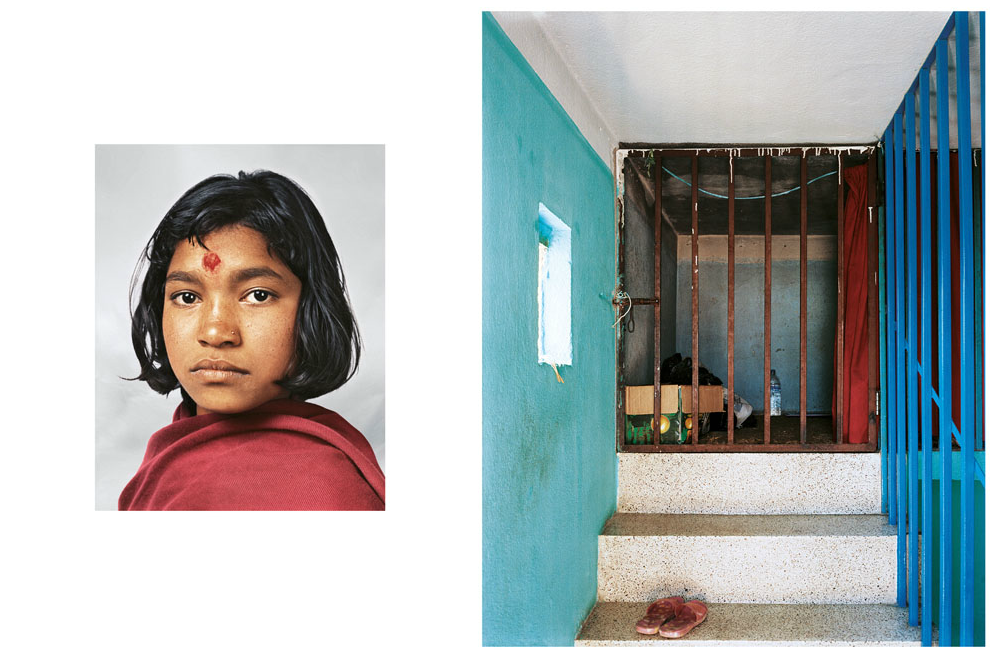
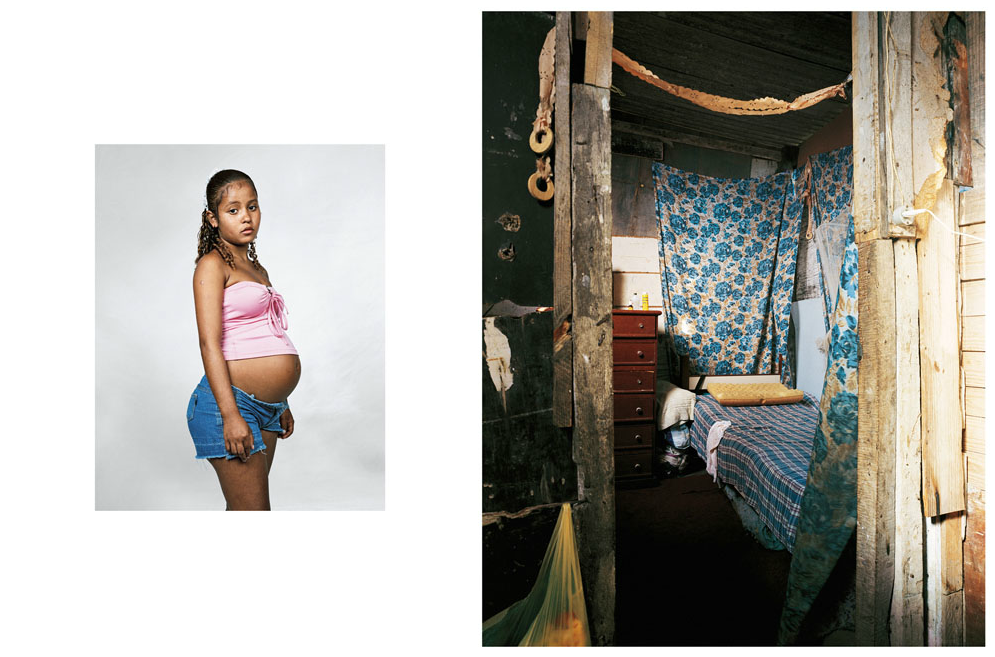
-Juwon
Sort of similar to one of the posts someone posted on toys of children all around the world...
This shows the kids too and shares a little bit of information on the kids and it's interesting if you imagine the kids after looking at only their rooms and actually read how they are.
Here's part from the site:
Perhaps most interestingly, the book was written and designed as an empathy tool for 9-to-13-year-olds to better understand the lives of other children around the world, but it is also very much a poignant photographic essay on human rights for the adult reader.

7-year-old Indira works at a granite quarry and lives in a one-room house near Katmandu, Nepal, with her parents, brother and sister.

4-year-old Jasmine has participated in over 100 child beauty pageants and lives in a large house in the Kentucky countryside.

8-year-old Justin plays football, basketball and baseball. He lives in a four-bedroom house in New Jersey.

9-year-old Dong shares a room with his parents, sister and grandfather, growing rice and sugar cane in China's Yunnan Province.

9-year-old Delanie aspires to be a fashion designer and lives with her parents and younger siblings in a large house in New Jersey.

9-year-old Tsvika and his siblings share a bedroom in an apartment in the West Bank, in a gated Orthodox Jewish community known as Beitar Illit.

9-year-old Jamie shares a top-floor apartment on New York's Fifth Avenue with his parents and three siblings. The family's two other homes are in Spain and the Hamptons.

12-year-old Lamine sleeps in a room shared with several other boys in the Koranic school in their Senegalese village.

14-year-old Irkena is a member of the semi-nomadic Rendille tribe in Kenya and lives with his mother in a temporary homestead in the Kaisut Desert.

14-year-old Prena is a domestic worker in Nepal and lives in a cell-like room in the attic of the house where she works in Katmandu.

14-year-old Erien slept on the floor of her favela abode in Rio de Janeiro until the late stages of her pregnancy.
-Juwon
hardship of getting asylum as Transgender
http://www.fmreview.org/sogi/bach
Following up with the last post, this site explains why it's harder especially for transgender asylum applicants to get asylum(this site is referring to UK laws). For most asylum applicants, they have to prove that they are at risk of persecution. For Transgenders, this is particularly hard because it is hard to prove the "well-founded fear" and on top of that, they also have to prove their transition.
This site talks about Transgenders specifically but I can't imagine how hard it would be for any LGBTI applicants to go through this process because they basically have to gather any evidence of their past/present living in fear.
-Juwon
Following up with the last post, this site explains why it's harder especially for transgender asylum applicants to get asylum(this site is referring to UK laws). For most asylum applicants, they have to prove that they are at risk of persecution. For Transgenders, this is particularly hard because it is hard to prove the "well-founded fear" and on top of that, they also have to prove their transition.
This site talks about Transgenders specifically but I can't imagine how hard it would be for any LGBTI applicants to go through this process because they basically have to gather any evidence of their past/present living in fear.
-Juwon
guidance for LGBTI applicants in applying for asylum
http://www.uscis.gov/sites/default/files/USCIS/Humanitarian/Refugees%20%26%20Asylum/Asylum/Asylum%20Native%20Documents%20and%20Static%20Files/RAIO-Training-March-2012.pdf
This is a official guidance for claim document you use when you apply for asylum in the States as a LGBTI person. I thought this was an interesting piece of document especially because a lot of countries do not provide asylum for a LGBTI person.
I personally read this because one of my friends at Berkeley is writing a case study on Korean FTM transgender and he was suggested by another friend that he should apply for the specific asylum.
Below is part of the introduction of the document:
"It has been over 20 years since Fidel Armando Toboso Alfonso, a gay man from Cuba, was granted withholding of deportation in the United States based on his sexual orientation.1 The Toboso-Alfonso decision paved the way for hundreds of lesbian, gay, bisexual, and transgender individuals as well as individuals with intersex conditions (LGBTI) to obtain refugee and asylum status in the United States. Recently, the United Nations marked another “significant milestone in the long struggle for equality, and the beginning of a universal recognition that LGBT[I] persons are endowed with the same inalienable rights – and entitled to the same protections – as all human beings”2 by passing a Resolution on Human Rights, Sexual Orientation, and Gender Identity. The increasing number of refugee and asylum (protection) claims related to LGBTI and HIV-positive status has resulted in the need for greater awareness of the issues involved in these claims and training on their adjudication.3 "
-Juwon
This is a official guidance for claim document you use when you apply for asylum in the States as a LGBTI person. I thought this was an interesting piece of document especially because a lot of countries do not provide asylum for a LGBTI person.
I personally read this because one of my friends at Berkeley is writing a case study on Korean FTM transgender and he was suggested by another friend that he should apply for the specific asylum.
Below is part of the introduction of the document:
"It has been over 20 years since Fidel Armando Toboso Alfonso, a gay man from Cuba, was granted withholding of deportation in the United States based on his sexual orientation.1 The Toboso-Alfonso decision paved the way for hundreds of lesbian, gay, bisexual, and transgender individuals as well as individuals with intersex conditions (LGBTI) to obtain refugee and asylum status in the United States. Recently, the United Nations marked another “significant milestone in the long struggle for equality, and the beginning of a universal recognition that LGBT[I] persons are endowed with the same inalienable rights – and entitled to the same protections – as all human beings”2 by passing a Resolution on Human Rights, Sexual Orientation, and Gender Identity. The increasing number of refugee and asylum (protection) claims related to LGBTI and HIV-positive status has resulted in the need for greater awareness of the issues involved in these claims and training on their adjudication.3 "
-Juwon
Little progress in drawing poor to elite colleges
http://www.nytimes.com/2014/08/26/education/despite-promises-little-progress-in-drawing-poor-to-elite-colleges.html?ref=education&gwh=0C85F903D41B8E3212B169F66B01D4F9&gwt=pay&assetType=nyt_now
With the earlier article, this is also in lieu of affirmative action and education.
This one focuses more on social inequality in general population in higher education.
In the article, they mention that it's not just about going to any college; going to elite schools is almost like inheritance and that is part of the reason the population rate of students from poorer half the country has not risen in the last 10 years.
After reading the article, I looked further into aid programs that support and raises awareness of possibility of students from lower income class going to elite colleges for little money. The statistics of race of students in those programs were also interesting to look because they were very two races heavy.( http://www.abetterchance.org/abetterchance.aspx?pgID=970)
-Juwon
With the earlier article, this is also in lieu of affirmative action and education.
This one focuses more on social inequality in general population in higher education.
In the article, they mention that it's not just about going to any college; going to elite schools is almost like inheritance and that is part of the reason the population rate of students from poorer half the country has not risen in the last 10 years.
After reading the article, I looked further into aid programs that support and raises awareness of possibility of students from lower income class going to elite colleges for little money. The statistics of race of students in those programs were also interesting to look because they were very two races heavy.( http://www.abetterchance.org/abetterchance.aspx?pgID=970)
-Juwon
affirmative action for Asian Americans
http://www.nytimes.com/2012/11/04/education/edlife/affirmative-action-a-complicated-issue-for-asian-americans.html?pagewanted=all&_r=1&
I found affirmative action to be one of the big evidence of our belief of racial and economic discrimination in the society. The fact that it is always changing so frequently reflects the general consensus of the society as well.
This article focuses on Asian Americans within affirmative action.
-Juwon
I found affirmative action to be one of the big evidence of our belief of racial and economic discrimination in the society. The fact that it is always changing so frequently reflects the general consensus of the society as well.
This article focuses on Asian Americans within affirmative action.
-Juwon
Contrasting perspectives of America's view on China
This is not necessarily related to queer or African American issue in class but I thought this was an interesting evidence of America's view on China today--especially with these two. I think China is in an interesting place with being one of the super powers in the world yet having distinctive philosophical differences from other super powers in the world, making them a minority.
The Facebook video is a video that Fox Business put up on Friday(before IPO) and the second link is an opinion piece on New York Post, interestingly from Fox Business Network senior correspondent.
https://www.facebook.com/video.php?v=10152692559325238
http://nypost.com/2014/09/16/alibabas-big-risk-do-you-really-trust-beijing/
- Juwon
The Facebook video is a video that Fox Business put up on Friday(before IPO) and the second link is an opinion piece on New York Post, interestingly from Fox Business Network senior correspondent.
https://www.facebook.com/video.php?v=10152692559325238
http://nypost.com/2014/09/16/alibabas-big-risk-do-you-really-trust-beijing/
- Juwon
Thursday, September 18, 2014
"9 Awesome Things Dan Savage Said at the Toronto Premiere of Fantastic New Doc 'Do I Sound Gay?'"
Posted By Zach Robinson
I think this article has a lot of interesting insights from Dan Savage who is a advice columnist about sex. He was speaking about the new documentary "Do I Sound Gay?" and I think most interestingly he says "There were the guys who thought there was something really wrong with them when they realized they were gay. They thought had done something terrible. And then there was what I thought, which was I thought there's nothing wrong me but there's something wrong with you. I'm fine, you're fucked, Catholic Church, parents. And what I love now is there's more in-your-face owning it queer people in the world who are visible. There are more gay kids now growing up thinking 'I'm fine, you're fucked.'" I think there are more people who come out and are comfortable with themselves but not with the way the world treats queen youth; however, I still know there is a lot of intolerance especially for people in rural, low income communities and in minority groups.
Read the Article
I think this article has a lot of interesting insights from Dan Savage who is a advice columnist about sex. He was speaking about the new documentary "Do I Sound Gay?" and I think most interestingly he says "There were the guys who thought there was something really wrong with them when they realized they were gay. They thought had done something terrible. And then there was what I thought, which was I thought there's nothing wrong me but there's something wrong with you. I'm fine, you're fucked, Catholic Church, parents. And what I love now is there's more in-your-face owning it queer people in the world who are visible. There are more gay kids now growing up thinking 'I'm fine, you're fucked.'" I think there are more people who come out and are comfortable with themselves but not with the way the world treats queen youth; however, I still know there is a lot of intolerance especially for people in rural, low income communities and in minority groups.
Read the Article
"HOW TO BUILD A MASSIVE YOUTUBE FOLLOWING--WITH A MESSAGE"
Posted by Zach Robinson
This profile of Tyler Oakly intrigues me, because it speaks to his goals through being a social media personality and the use of YouTube as a platform for change
Read The Article
This profile of Tyler Oakly intrigues me, because it speaks to his goals through being a social media personality and the use of YouTube as a platform for change
Read The Article
FACEBOOK FORCES DRAG QUEENS AND TRANS PEOPLE TO USE “REAL NAMES”
Posted by Zach Robinson
I really feel like this is a pointless fight for Facebook to start. It doesn't affect their business for people to use other names, and makes the company seem much less approachable. I wonder about the affects outside the LGBTQ community.
Read The Article
I really feel like this is a pointless fight for Facebook to start. It doesn't affect their business for people to use other names, and makes the company seem much less approachable. I wonder about the affects outside the LGBTQ community.
Read The Article
Can ‘Harry Potter’ Change the World?
"Harry has meaningful contact with characters belonging to stigmatized groups. He tries to understand them and appreciate their difficulties, some of which stem from intergroup discrimination, and fights for a world free of social inequalities.”
Harry Potter, as one of the most popular books in past 10 years, it changed this world more or less.
There are lots of voices arise in society about both the advantages and disadvantage that harry potter brings to us.
here is the link
http://op-talk.blogs.nytimes.com/2014/09/17/can-harry-potter-change-the-world/?src=recg
post by Reven
Harry Potter, as one of the most popular books in past 10 years, it changed this world more or less.
There are lots of voices arise in society about both the advantages and disadvantage that harry potter brings to us.
here is the link
http://op-talk.blogs.nytimes.com/2014/09/17/can-harry-potter-change-the-world/?src=recg
post by Reven
In Search of a Gay Aesthetic
It is interesting that why there are lots of gay designers in fashion world, and they are always very successful.
Here is an article about queer designer of fashion.
http://www.nytimes.com/2013/09/12/fashion/in-search-of-a-gay-aesthetic.html?pagewanted=all&_r=0
post by Reven
Here is an article about queer designer of fashion.
http://www.nytimes.com/2013/09/12/fashion/in-search-of-a-gay-aesthetic.html?pagewanted=all&_r=0
post by Reven
It is not beautiful
Ai Weiwei, as one of the most powerful artists in today's world, he is not only an artist who active in sculpture, installation, architecture, curating, photography and film but also he is a Chinese political activist. Ai Weiwei’s father Ai Qing is one of the most excellent poets in China. Unfortunately, his father was denounced during the Anti-Rightist Movement. Cultural Revolution influenced Ai Weiwei’s childhood and even the whole life. Now, Ai Weiwei has been highly and openly critical of the Chinese government’s stance on democracy and human right.
Here is an interesting article about Ai Weiwei.
Wednesday, September 17, 2014
Evidence
Naomi Campbell Goes back to her roots in Brixton London for British Vogue. Naomi roams throughout the neighborhoods in South London with her hometown friends and recollects what it was like growing up there for her. Footage is featured of her grandmother, her mother, and her as a child.
Rahmeik Bowen
Heirloom Qualities
Jonathan Olivares is a California based industrial designer. He claims that material can come in to play in selecting furnitures that can become an heirloom.
Article: http://www.nytimes.com/2014/09/11/garden/outdoor-heirlooms-dining-tables.html?ref=garden#
-Nova
A Life in Photographs
On one hand, photographs serves its purpose as an evidence of someone's existence and on another it captures the essence of that someone, and here we have the ever elegant Audrey Hepburn. We will always remember her in Breakfast at Tiffany's with her high coif, pearls and black dress but here we have a slightly aged Hepburn in 1987 still holding her poise, elegance and femininity.
Article: http://www.huffingtonpost.com/2014/05/04/audrey-hepburn-older-photos_n_5255122.html
-Nova
Controversial Artifacts
Article: http://www.washingtonpost.com/news/morning-mix/wp/2014/09/15/urban-outfitters-red-stained-vintage-kent-state-sweatshirt-is-not-a-smart-look-this-fall/
- Nova
Divine Sweaters
http://dangerousminds.net/comments/trash_with_class_john_waters_muse_divine_immortalized
British designer James Long created two sweaters from his Autumn/Winter 2013 collection. He immortalized both Divine and Harris Glenn Milstead via knitted sweaters.
Food For Thought: Divine's Obituary
http://www.nytimes.com/1988/03/08/obituaries/divine-transvestite-film-actor-found-dead-in-hollywood-at-42.html
I found the obituary of the deceased drag queen Divine, or also known as Harris Glenn Milstead. The obituary is very factual and gives a general account of Divine's life, achievements, legacy, and work. This obituary acts as evidence of Divine's life, and as we discussed in class, obituaries are insightful documents into understanding a person's life.
By Isabelle Hay
I found the obituary of the deceased drag queen Divine, or also known as Harris Glenn Milstead. The obituary is very factual and gives a general account of Divine's life, achievements, legacy, and work. This obituary acts as evidence of Divine's life, and as we discussed in class, obituaries are insightful documents into understanding a person's life.
By Isabelle Hay
Food For Thought: Gordon Parks
http://lens.blogs.nytimes.com/2012/07/16/a-different-approach-to-civil-rights-images/?_php=true&_type=blogs&_r=0
I found an article on the photographer Gordon Parks's subtle yet powerful images during the civil rights movement. These images are interesting because they are different from the others being produced at the time; they are described as an 'alternative approach' to the civil rights movement. Parks focused on the day to day activities of African Americans during a racially hostile period in America. This effect was powerful, in that he focused on the emotion of 'empathy.' African Americans were fraught with an immense amount of conflict during this time, but Parks's images symbolize a peacefulness, a normality, a day to day existence that African American's yearned to live in peacefully and freely.
by Isabelle Hay
I found an article on the photographer Gordon Parks's subtle yet powerful images during the civil rights movement. These images are interesting because they are different from the others being produced at the time; they are described as an 'alternative approach' to the civil rights movement. Parks focused on the day to day activities of African Americans during a racially hostile period in America. This effect was powerful, in that he focused on the emotion of 'empathy.' African Americans were fraught with an immense amount of conflict during this time, but Parks's images symbolize a peacefulness, a normality, a day to day existence that African American's yearned to live in peacefully and freely.
by Isabelle Hay
Tuesday, September 16, 2014
Psychology of Clutter
A while ago I posted about the psychology behind hoarding. Obviously, hoarding is an extreme condition that only a small percentage of people grapple with. However, clutter is a much more common problem. It seems to be one we all face. No matter how simplistic we'd like our lives or living spaces to be ideally, in real life, we take comfort in our possessions which usually leads to us compromising our sleek, beautiful, yet empty living spaces for the comfort of having possessions that matter to us around. This article looks at why we have clutter.
http://online.wsj.com/articles/the-psychology-of-clutter-1404772636
Posted by Briana Lynch
http://online.wsj.com/articles/the-psychology-of-clutter-1404772636
Posted by Briana Lynch
Monday, September 15, 2014
Possessions and Hurricane Sandy
This article talks about the aftermath of hurricane Sandy and what people lost in the storm. What I find interesting are the items the author mentions. They range from loosing cable boxes to loosing a home. Are our electronic possessions really becoming a big enough part of our lives that loosing them even belongs in the same article as a story about someone loosing their home?
http://www.nydailynews.com/life-style/health/coping-life-sandy-article-1.1195227
Posted by Briana Lynch
http://www.nydailynews.com/life-style/health/coping-life-sandy-article-1.1195227
Posted by Briana Lynch
Sunday, September 14, 2014
Asexuality and the LGBT Community
http://www.huffingtonpost.com/2013/06/21/lgbt-asexual_n_3385530.html
The above article discusses how some members of the LGBT community are fighting or against the inclusion of asexuality into their community. The primary argument is that asexual people, who generally don't experience a sexual attraction, do not face the same oppression or prejudice as gay or lesbian members. However, many asexuals are met with doubt when they are open about their identity. Even having others claim that they're repressed or have suffered a trauma rather than having just been born that way. There is also "corrective rape" in which people believe they can change an asexual persons opinions on sex by having them experience it. Clearly asexuals are repressed, but in different ways than a majority of the LGBT community. Does that mean the umbrella of minority sexual orientations doesn't cover them?
Posted by Briana Lynch.
The above article discusses how some members of the LGBT community are fighting or against the inclusion of asexuality into their community. The primary argument is that asexual people, who generally don't experience a sexual attraction, do not face the same oppression or prejudice as gay or lesbian members. However, many asexuals are met with doubt when they are open about their identity. Even having others claim that they're repressed or have suffered a trauma rather than having just been born that way. There is also "corrective rape" in which people believe they can change an asexual persons opinions on sex by having them experience it. Clearly asexuals are repressed, but in different ways than a majority of the LGBT community. Does that mean the umbrella of minority sexual orientations doesn't cover them?
Posted by Briana Lynch.
From Cover Girl to Cover Up: Naomi Sims Turns Wigs into Millions
http://www.people.com/people/archive/article/0,,20068585,00.html
People couldn't take their eyes off her," recalls designer Halston of the svelte black model, with her exotic proportions, 5'10" height, perfect oval face and lizard grace. Adds model agency head Wilhelmina Cooper: "She could make any garment—even a sackcloth—look like sensational haute couture."
The times were right for Naomi Sims. When she made her debut as an 18-year-old in 1967, it was the peak of the civil rights movement. The chant of "black is beautiful" was in the air, and Naomi became the first woman of her race to arrive in the world of high fashion. "She was the great ambassador for all black people," Halston recalls. "She broke down all the social barriers."
Yet when she was only 24, Naomi quit to go into business for herself, despite fees of up to $1,000 a day. "Modeling was never my ultimate goal," she explains. Her new career was the manufacture of wigs for black women, who account for 40 percent of the market. A risky, highly competitive profession? Yes, but last year the Naomi Sims Collection grossed $5 million, making her one of the nation's top black businesswomen.
At 28, Naomi enjoys all the perks of a millionaire female executive—chauffeured limousine, Tiffany jewelry, designer clothes, a Manhattan co-op, a Connecticut summer home with houseboy and cook. She also has an Ecuadorian nanny to look after 2½-year-old John Phillip, nicknamed "Pip," the product of her four-year marriage to British-born art dealer Michael Findlay, 32.
It is a life that she could hardly have dreamed of while growing up in Pittsburgh. She recalls her childhood as lonely, partly because she was separated for nine years from her older sisters, Betty (now a Ford model) and Doris (a schoolteacher). "I was forced to be self-reliant," she says. Naomi has only vague memories of her father in the early years. Her mother was the strong influence, inculcating the family with the belief, "Nothing is impossible." But when Naomi was 8, her mother suffered a nervous breakdown. "I moved around a lot," Naomi recalls, eventually settling with loving foster parents who raised her. Adding to the usual adolescent agonies was her spindly height which, she confesses, "gave me a complex."
After high school graduation, Naomi discovered her height was her greatest asset. When money for classes at New York's famed Fashion Institute ran out, a counselor suggested modeling. Naomi began calling photographers, and in an incredible stroke of luck on her first professional job, she made the cover of the New York Times fall fashion section in 1967. Shortly thereafter Wilhelmina signed Naomi because "when that lady walked through a door, nobody else existed"—although until that time "there was no business for black models, period!" Photographers were so unaccustomed to dark skin that Naomi's portfolio shots, Wilhelmina recalls, often turned out "all teeth and the whites of her eyes." The next year Naomi found herself on the cover of Ladies' Home Journal. In October 1969, when LIFE put her on the cover, she was billed simply as "Top fashion model—Naomi Sims."
For all the glamor, Naomi became increasingly restless over the "narcissism" of her trade. "The toughest thing about modeling," she says, "is being involved with yourself 24 hours a day." She was reluctant to talk about what she did for a living. "People think all models are stupid," she notes angrily. Naomi wasn't. Aware that she could not wear wigs because "I couldn't find any that matched my eyes, nose and coloring," she began researching synthetic hair. "I never traveled without scissors," she says. "Wherever I went—streets, theater—I'd ask for hair samples." With the help of chemists from Metropa, an existing wig manufacturer, she developed a coarse hair fiber resembling the straightened hair of black women, and decided to experiment with her first collection. "I trusted my judgment," she says. "I had an excellent product, and I wouldn't give up."
Again timing was on Naomi's side. In 1973 the vogue for the Afro was waning and there was a new interest in wigs. On the basis of her reputation as a model, she persuaded 80 stores to show her line. White store managers were reluctant, even in neighborhoods with a large black clientele. But sales have mushroomed through word of mouth. Also helping to promote her name is her 1976 book, All About Health & Beauty for the Black Woman (Doubleday), which has gone into six printings. Today the Naomi Sims Collection is carried in 2,000 stores in the U.S., Africa and the West Indies, and 1977 sales are expected to top $6 million.
In retrospect, 1973 was truly a year of decision for Naomi: she also met her future husband, a young Scotsman launching himself as an art dealer. "I courted her in a rather traditional way," Findlay recalls, "which means I laid siege to her doorstep and sent lots of flowers." He also proposed on their first date, a move he now admits "greatly confused Naomi and set our relationship back six months."
Today their mutual interest in art—Findlay owns a gallery in Manhattan, she collects the work of young American painters—remains strong. So does their marriage. Naomi believes its success rests on being co-equals. "If a woman is financially independent, she's more her own person," she explains. "She has emotional freedom." Does she miss being a cover girl? "No," Naomi replies firmly. "What I'm doing is far more fulfilling. I'm more in control of my life."
Posted by Shuyang Peng
People couldn't take their eyes off her," recalls designer Halston of the svelte black model, with her exotic proportions, 5'10" height, perfect oval face and lizard grace. Adds model agency head Wilhelmina Cooper: "She could make any garment—even a sackcloth—look like sensational haute couture."
The times were right for Naomi Sims. When she made her debut as an 18-year-old in 1967, it was the peak of the civil rights movement. The chant of "black is beautiful" was in the air, and Naomi became the first woman of her race to arrive in the world of high fashion. "She was the great ambassador for all black people," Halston recalls. "She broke down all the social barriers."
Yet when she was only 24, Naomi quit to go into business for herself, despite fees of up to $1,000 a day. "Modeling was never my ultimate goal," she explains. Her new career was the manufacture of wigs for black women, who account for 40 percent of the market. A risky, highly competitive profession? Yes, but last year the Naomi Sims Collection grossed $5 million, making her one of the nation's top black businesswomen.
At 28, Naomi enjoys all the perks of a millionaire female executive—chauffeured limousine, Tiffany jewelry, designer clothes, a Manhattan co-op, a Connecticut summer home with houseboy and cook. She also has an Ecuadorian nanny to look after 2½-year-old John Phillip, nicknamed "Pip," the product of her four-year marriage to British-born art dealer Michael Findlay, 32.
It is a life that she could hardly have dreamed of while growing up in Pittsburgh. She recalls her childhood as lonely, partly because she was separated for nine years from her older sisters, Betty (now a Ford model) and Doris (a schoolteacher). "I was forced to be self-reliant," she says. Naomi has only vague memories of her father in the early years. Her mother was the strong influence, inculcating the family with the belief, "Nothing is impossible." But when Naomi was 8, her mother suffered a nervous breakdown. "I moved around a lot," Naomi recalls, eventually settling with loving foster parents who raised her. Adding to the usual adolescent agonies was her spindly height which, she confesses, "gave me a complex."
After high school graduation, Naomi discovered her height was her greatest asset. When money for classes at New York's famed Fashion Institute ran out, a counselor suggested modeling. Naomi began calling photographers, and in an incredible stroke of luck on her first professional job, she made the cover of the New York Times fall fashion section in 1967. Shortly thereafter Wilhelmina signed Naomi because "when that lady walked through a door, nobody else existed"—although until that time "there was no business for black models, period!" Photographers were so unaccustomed to dark skin that Naomi's portfolio shots, Wilhelmina recalls, often turned out "all teeth and the whites of her eyes." The next year Naomi found herself on the cover of Ladies' Home Journal. In October 1969, when LIFE put her on the cover, she was billed simply as "Top fashion model—Naomi Sims."
For all the glamor, Naomi became increasingly restless over the "narcissism" of her trade. "The toughest thing about modeling," she says, "is being involved with yourself 24 hours a day." She was reluctant to talk about what she did for a living. "People think all models are stupid," she notes angrily. Naomi wasn't. Aware that she could not wear wigs because "I couldn't find any that matched my eyes, nose and coloring," she began researching synthetic hair. "I never traveled without scissors," she says. "Wherever I went—streets, theater—I'd ask for hair samples." With the help of chemists from Metropa, an existing wig manufacturer, she developed a coarse hair fiber resembling the straightened hair of black women, and decided to experiment with her first collection. "I trusted my judgment," she says. "I had an excellent product, and I wouldn't give up."
Again timing was on Naomi's side. In 1973 the vogue for the Afro was waning and there was a new interest in wigs. On the basis of her reputation as a model, she persuaded 80 stores to show her line. White store managers were reluctant, even in neighborhoods with a large black clientele. But sales have mushroomed through word of mouth. Also helping to promote her name is her 1976 book, All About Health & Beauty for the Black Woman (Doubleday), which has gone into six printings. Today the Naomi Sims Collection is carried in 2,000 stores in the U.S., Africa and the West Indies, and 1977 sales are expected to top $6 million.
In retrospect, 1973 was truly a year of decision for Naomi: she also met her future husband, a young Scotsman launching himself as an art dealer. "I courted her in a rather traditional way," Findlay recalls, "which means I laid siege to her doorstep and sent lots of flowers." He also proposed on their first date, a move he now admits "greatly confused Naomi and set our relationship back six months."
Today their mutual interest in art—Findlay owns a gallery in Manhattan, she collects the work of young American painters—remains strong. So does their marriage. Naomi believes its success rests on being co-equals. "If a woman is financially independent, she's more her own person," she explains. "She has emotional freedom." Does she miss being a cover girl? "No," Naomi replies firmly. "What I'm doing is far more fulfilling. I'm more in control of my life."
Posted by Shuyang Peng
Late supermodel Naomi Sims' estate is to be auctioned in Montclair As Heirloom
http://www.nj.com/news/index.ssf/2010/02/supermodel_naomi_sims_pieces_t.html
This article can be seen as evidence and heirloom
Post by Shuyang Peng
This article can be seen as evidence and heirloom
Post by Shuyang Peng
Naomi Sims, the first black supermodel, dies of cancer at age 61
http://www.nydailynews.com/life-style/fashion/naomi-sims-black-supermodel-dies-cancer-age-61-article-1.394048
This article was written the year when Naomi died. There are artifacts and evidences in this article.
Psted by Shuyang Peng
This article was written the year when Naomi died. There are artifacts and evidences in this article.
Psted by Shuyang Peng
Thursday, September 11, 2014
A story of Taiwan
this topic intrdues a Taiwan of History, Memory and Mystery, the Chinese government blocks many stories of taiwan, however the movie is a way to tell the truth behind this beautiful island.
http://online.wsj.com/articles/film-retrospective-also-like-life-the-films-of-hou-hsiao-hsien-1410301281
kun
http://online.wsj.com/articles/film-retrospective-also-like-life-the-films-of-hou-hsiao-hsien-1410301281
kun
Millions of Documents
this topic is talking that the Smithsonian Works to Digitize Millions of Documents. Instead of the old way to protect the old document, Now these institutions are increasingly relying on crowdsourcing technology to get the files transcribed.
kun
He Paints the Past
History painters, like photographers, they use their own ways to tell the historic stories.
Here are some artists who really like painting about civil war. one of the artists, Constance thinks "Children learn about the Civil War in school, and these paintings make the events real to them."
Here is the link:
http://online.wsj.com/articles/SB10001424052748704483004575524373349347374
-Reven
slaves in the family
It is the chapter one of the book Slaves in The Family. author uses the simple words to tell us a true story about his memory of his family.
In the book, there are many paragraphs that express a very moving emotion from a person who is born in the slave family.
Here are some quotes:
"The plantation heritage was not "ours," like a piece of family property, and not "theirs," belonging to black families, but a shared history. "
"Slave owners rarely became artists. Despite their leisure, they did not paint pictures or perform music apart from recitals at home. They wrote, but only for a few readers. Rather than make art, slave owners collected things. They assembled people, land, and facts about both."
Here is the link:
http://www.nytimes.com/books/first/b/ball-slaves.html
-Reven
In the book, there are many paragraphs that express a very moving emotion from a person who is born in the slave family.
Here are some quotes:
"The plantation heritage was not "ours," like a piece of family property, and not "theirs," belonging to black families, but a shared history. "
"Slave owners rarely became artists. Despite their leisure, they did not paint pictures or perform music apart from recitals at home. They wrote, but only for a few readers. Rather than make art, slave owners collected things. They assembled people, land, and facts about both."
Here is the link:
http://www.nytimes.com/books/first/b/ball-slaves.html
-Reven
Photography in the Docket, as Evidence
Photography is one of the most believable ways to record an event. As the journalists and photographers, the need to document what the saw and publish the pictures to told public. It is very shock that when images as the evidences and show the world what the ethnic classing look like.
Here is the link of the article:
http://mobile.nytimes.com/blogs/lens/2013/04/02/photography-in-the-docket-as-evidence/
More pictures about it:
http://mobile.nytimes.com/slideshow/100000002149147/blogs/lens/2013/04/02/photography-in-the-docket-as-evidence/
-Reven
Here is the link of the article:
http://mobile.nytimes.com/blogs/lens/2013/04/02/photography-in-the-docket-as-evidence/
More pictures about it:
http://mobile.nytimes.com/slideshow/100000002149147/blogs/lens/2013/04/02/photography-in-the-docket-as-evidence/
-Reven
"Apple CEO Tim Cook Is 'Not Satisfied' With Employee Diversity"
Posted by Zach Robinson
This article addresses Apple's recent diversity and inclusion report which revealed a huge disparity between national demographics and those of the company. It also quotes CEO Tim Cook as saying he isn't satisfied with the numbers and that the company is working to change this. The company also posted a video describing the importance of diversity to the landscape they work in and a letter detailing cooks full remarks on the report.
"Monumental Dilemma"
Posted by Zach Robinson
This podcast adresses a really interesting dilemma in which a woman who acted in a way that was pretty universally understood to be unheroic, but because of the politics in the area at the time was seen as a hero. The current state of the monument and the idea of otherness being part of why she was so popular in the time provides a really interesting look into how things shift over time and how they remain stagnant.
"New Study Shows 'Broken Windows' Targets Minorities in Low-Crime Neighborhoods"
Posted by Zach Robinson
This is an interesting story about the NYPDs methods of policing and how they seem to skew towards heavier policing on minorities. This is all underpinned by NYPD commissioner Bill Bratton's approach to policing, which has been widely criticized as being biased.
Wednesday, September 10, 2014
#ferguson #evidence
On the one-month anniversary of Michael Brown’s death, his family gathered at the Ferguson Police Department to again demand justice for his murder. Darren wilson has still not been arrested.
source
source
Thoughts on Memorials
I was thinking about how memorials are often physical representations of events or experiences. But are the best memorials even coming close to expressing what they stand for? Or are viewers simply applying their own thoughts and emotions to the monument.
While there are many examples, the Irish Hunger memorial came to mind. We're in a time now when we can still feel bad for the people that suffered during that time. And even trace our relation to them in some cases. However, a grassy field with stones naming the Irish counties can never compare to starving to death, or fearing that you will be unable to feed your family, or seeing people starving around you. Yet people still visit this memorial and get emotional, or thankful to be living in a better time.
Do memorials actually facilitate a reaction for people, or do they simply give people an acceptable reason to react?
Posted by Briana Lynch
Subscribe to:
Posts (Atom)


